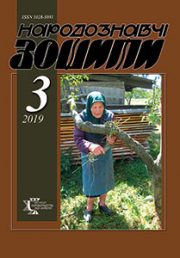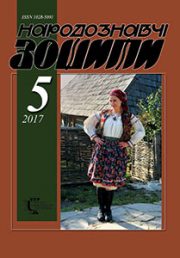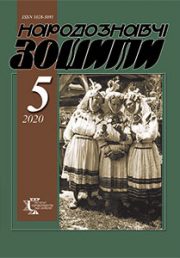The Ethnology Notebooks. 2022. № 6 (168), 1367—1376
UDK [745.52.04.011.26:39:677.024](477.8+474.5)”18/20″
DOI https://doi.org/10.15407/nz2022.06.1367
OVERSHOT WESTERN UKRAINIAN AND LITHUANIAN COVERLETS: ETHNO-ARTISTIC PARALLELS
NYKORAK Оlena
- ORCID ID: https://orcid.org/0000-0003-0887-8929
- doctor in Art Studies, professor, Leading Researcher,
- Ethnology Institute of the National Academy of Sciences of Ukraine,
- Folk Art Department,
- 15, Svoboda Avenue, 79000, Lviv, Ukraine,
- Contacts: e-mail: olenanykorak@gmail.com
KUTSYR Tetiana
- ORCID ID: https://orcid.org/0000-0002-6522-0640
- Candidate of Art Studies (Ph.D.), Researcher,
- Ethnology Institute of the National Academy of Sciences of Ukraine,
- Folk Art Department,
- 15, Svoboda Avenue, 79000, Lviv, Ukraine,
- Contacts: e-mail: sonechko_29@ukr.net
Abstract. Western Ukrainian and Lithuanian overshot coverlets are studied based on the results of Ukrainian-Lithuanian R.&D. projects «Ornamentation of West Ukrainian and Lithuanian Folk Textile: Universal and Unique Parameters» (2018—2019) and «Unique Technologies of Ethnographic Textile: Experience of Preservation in Western Ukraine and Lithuania» (2022). The relevance and novelty of the chosen subject are determined by its insufficient coverage in both countries art history and ethnological literature.
The article purpose is to reveal the commonalities of technical parameters and artistic and stylistic features in Western Ukrainian and Lithuanian overshot coverlets decoration ethno-artistic tradition.
The object of the research is Western Ukrainian and Lithuanian overshot coverlets, and the subject is common and distinctive features of their décor.
Comparative and artistic methods became basic for the research and made it possible to fully reveal the features of both countries woven coverlets at the end of the 19th and 20th centuries. Historical and typological methods were used as well, the first one to find out the dynamics of the change, and the second one to structure the obtained results. The formal method for the analysis of ornamental compositions was applied.
Technological features, common and distinctive aspectes of motifs, ornaments, variability of composition schemes, and colors of Western Ukrainian and Lithuanian overshot coverlets were studied during the research. They are separate types of interior fabrics, not similar in decoration to others. Processed in Lithuanian museum items dating from the XIX till the middle XX centuries. In Western Ukraine, the coverlets began to be made in the 1950s and 1960s in the Polissia region, to a lesser extent in the Volyn region, under the influence of the weaving tradition of neighboring Belarus, Poland, and probably Lithuania, and in Northern Bykovyna under the Romanian and Moldavian influences. Western Ukrainian and Lithuanian overshot coverlets are characterized by report cross-striped, checkered, mesh compositions (sometimes with a border along the lateral longitudinal edges or along the perimeter), as well as a textured surface in the form of vertical relief scars. The basic compositional element was a square, or more precisely, a variable alternation of two squares — dark and light. Compared to Ukrainian counterparts, Lithuanian overshot coverlets are distinguished by greater variability of composition schemes, careful development of motif forms, and a richer and wider range of color combinations.
We single out several composite ones, which are similar for the coverlets of both countries. In groups with diverse variations common to Ukrainian and Lithuanian items, it is possible to combine mesh compositions with alternating squares (in particular, with the «cat’s paw» motif); combination squares with lines or rectangles; various interpretations of the «cucumber» motifs, with rhombuses or floral motifs formed between them; circles with squares connection. Unique are the compositional solution of the Lithuanian Aukštaitian «star» coverlets, as well as the interpretation of motifs from crossed lines («window») of the Žemaitian overshot coverlets.
Keywords: Western Ukrainian, Lithuania, weaving, coverlet, overshot, decor, ornament, composition, color.
Received 22.11.2022
REFERENCES
- Sydorovych, S. (1979). Art Fabrics of UkrSSR Western Regions. Kyiv: Naukova dumka [in Ukrainian].
- Zakharchuk-Chuhai, R., Pavliuk, S., & Hlushko, M. (Eds.). (1995). Folk Decorative Art. Ukrainian Polissia. Historical and Ethnographic Research. Ovruchchyna (Vol. 2, pp. 302—304). Lviv: NAS of Ukraine. Ethnology Institute [in Ukrainian].
- Lashchuk, Ju. (1992). Ukrainian Polissia Folk Art. Lviv: Kameniar [in Ukrainian].
- Nykorak, O. (2004). The Ukrainian Traditional Folk Cloths of XIX and XX cc. Interior Cloths (Based on Materials from Ukrainian Western Regions) (Part I). Lviv: Ethnology Institute of NAS of Ukraine [in Ukrainian].
- Selivachov, M. (2005). Lexicon of Ukrainian Ornamentation (Iconography, Nomination, Styles, Typology). Kyiv: Ant [in Ukrainian].
- Savoniakaite, V. (1998). Fabrics in Rural Culture: Lithuanian Geometric Patterns in the 19th and 20th Centuries. Vilnius: Alma littera [in Lithuanian].
- Savoniakaite, V., & Velius, N. (Ed.). (2002). Bedspreads of Peles area. Lithuanians from Lyda region (Vol. 1, pp. 291—300). Kaunas: Poligrafija ir informatika [in Lithuanian].
- Kudirka, J. (1984). The Lithuanians Territorial Peculiarities of Folk Art. Originality of Folk Art (Pp. 95—102). Kaunas.
- Kumpikaite, E., Tautkute-Stankuviene, I., & Kot, L. (2016). Ornamentation of Lithuanian Ethnographic Home Textiles. Fibers and Textiles in Eastern Europe, 5, 100—109. DOI: 10.5604/12303666.1215534.
- Kumpikaite, E., Kot, L., & Nenartaviciute, E. (2014). Comparable Analysis of Folk Home Textile of East Prussia in Territories of Lithuania and Poland. Open Journal of Social Sciences, 10 (Vol. 2, pp. 19—29). DOI: 10.4236/jss.2014.210004.
- Nykorak, O., Kutsyr, T., Kumpikaite, E., & Milasiene, D., et al. (2020). Western Ukrainian and Lithuanian Bedspreads: Decor Ethno-Artistic Tradition Parallels. The Ethnology Notebooks, 1 (151), 60—92. DOI: https://doi.org/10.15407/nz2020.01.060 [in Ukrainian].
- Postolaki, E., Selivachov, M. (1987). Folk Weaving and Its Ornamentation. In Artiukh, L., et al. Ukrainian and Moldovan Ethno-Cultural Relations in the Period of Socialism (Pp. 155—189). Kyiv: Naukova dumka [in Russian].
- Coverlet. Volyn Museum of Local Lore (hereinafter — VMLL). Inv. № D-1194. EI NASU Archive. F. 1. Desc. 2. Stor. Un. 440.
- Coverlet. Lazdijų district (Dzukia region). Open-Air Museum of Lithuania (hereinafter — OAML) (Rumsiskes). Inv. № LBM-1940; Coverlet. Kapiniskiu village, Varenos district (Dzukia region). OAML. Inv. № LBM-46411; Coverlet. Aukstaitia region. OAML. Inv. № LBM-4388.
- Coverlet. Pamerkio village, Varenos district (Dzukia region). OAML. Inv. № LBM-2537; Coverlet. Aukstaitia region. OAML. Inv. № LBM-47544, LBM-6494.
- Coverlet. Meskasalio village, Alytaus district (Dzukia region). OAML. Inv. № LBM-7235.
- Coverlet. Kozun village, Rozhyshche district, Volyn region (Western Polissia). VMLL. Inv. № Р2-418; Coverlet. Zamshany village, Ratne district, Volyn region (Western Polissia). Author’s field materials.
- Coverlet. Asteikiu village, Kretinga district (Zemaitija region). OAML. Inv. № LBM-4218.







